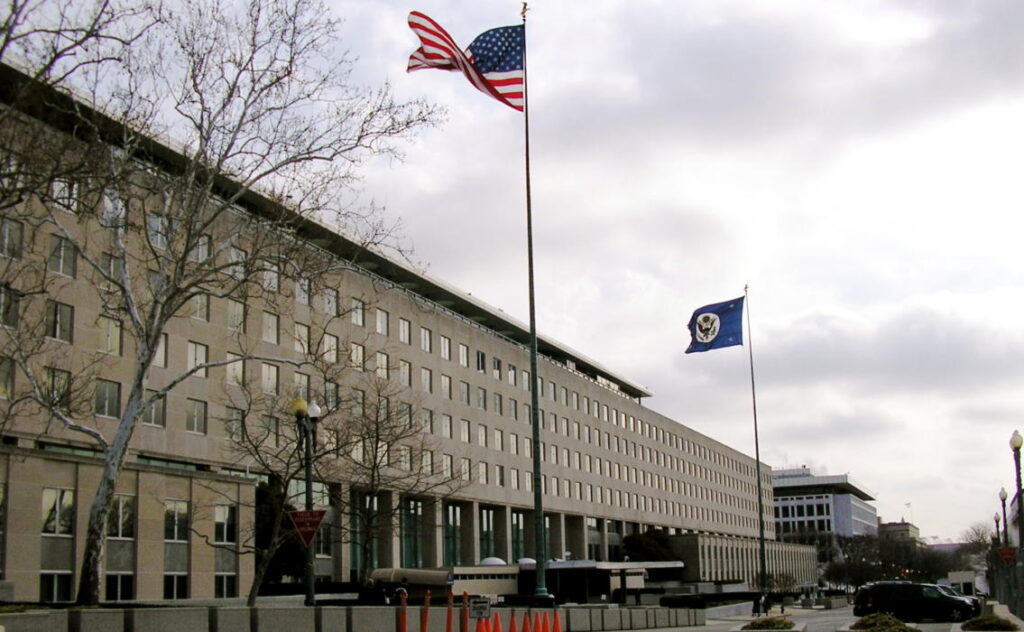.
Timeline 1967-1993 Argentine low-enriched uranium at Tehran Research Reactor
- 1967 United States supplies Iran with the 5MW-th research reactor using 93% highly enriched uranium (HEU) fuel supplied by the US until the Iranian Revolution of 1979.
- 1979 Iran stores several kilograms of HEU fuel exported by the United Nuclear Corporation.
- 1987 Argentina concludes a deal to convert reactor core to use nearly 20% (19,75%) low enriched unranium (LEU) fuel instead of 93% HEU fuel. Deal signed on May 5 after 18 months of negotiations between Argentine’s INVAP and the Atomic Energy Organization of Iran to deliver 115.8 kg of LEU from its Pilcanyeu enrichment plant and transfer of enrichment technology.
- 1987 (Sept. 26) The International Atomic Energy Agency approves Iran’s request for assistance in receiving 115.8 kg of 20% enriched uranium fuel from Argentina.
- 1989 Argentina replaces the core of Iran’s research reactor at the Tehran Nuclear Research Center (TNRC).
- 1993 The IAEA confirms that a (delayed) shipment of LEU fuel from Argentina will arrive in Iran within a year. Iran defends its pursuit of nuclear energy.
- 2006 Text of Iranian President Ahmadinejad’s letter to President George W. Bush
Iran’s enrichment for the Tehran Research Reactor
Reuters is reporting that Iran says it has began introducing 3.5 percent enriched uranium hexafluoride at the Natanz PFEP under IAEA supervision. As of mid-day February 9 (2009), the IAEA has not confirmed this to ISIS. The Reuters report indicates that Iran is using only a single cascade for the production of the research reactor’s LEU.
In Heavy Waters: Iran’s Nuclear Program, the Risk of War and Lessons from Turkey
(Int’l Crisis Group) – Even if a relative newcomer to the nuclear issue, Turkey also has useful experience. In 2010, together with Brazil – another rising new power – it engaged in intensive talks with Iranian officials and, much to the West’s surprise, reached a deal on the Tehran Research Reactor. Iran would deposit 1,200kg of low enriched uranium (LEU) in Turkey and, in return, would receive 120kg of 20 per cent enriched fuel for its reactor. The deal was far from perfect; although it mirrored almost exactly an earlier proposal from the P5+1 (the five permanent UN Security Council members plus Germany), time had passed; Iran’s LEU stockpile had grown, and it had begun to enrich at 20 per cent itself, an important though not definitive stage toward possibly enriching to weapons grade. But it could have been an important start; had it been accepted, Iran presently would have 1,200kg less of LEU and a step would have been taken towards building trust.
However, the P5+1 quickly dismissed the agreement and turned to tougher sanctions instead.
Today, with news that Iran has responded to the P5+1’s offer of talks, a new opportunity for diplomacy might have arisen. It should not be squandered. That means breaking with the pattern of the past: tough sanctions interrupted by episodic, fleeting meetings with Iran which, when they fail to produce the desired Iranian concession, are followed by ratcheted-up economic penalties. Instead, the parties would be well inspired to take a page out of Turkey’s playbook and pursue a meaningful and realistic initiative, possibly along the following lines:
Germany’s Proliferation of Nuclear Technology to Brazil, Argentina and the Indian Sub-continent
- What is really happening in Iran?
- Conversion from HEU to LEU based production for Medical Isotopes
- Medical Isotope Shortage Threatens Patient Care
NETANYAHU’S NEW RED LINE: ZERO ENRICHMENT ALLOWED IN IRAN
"But I will not let myself be reduced to silence."
